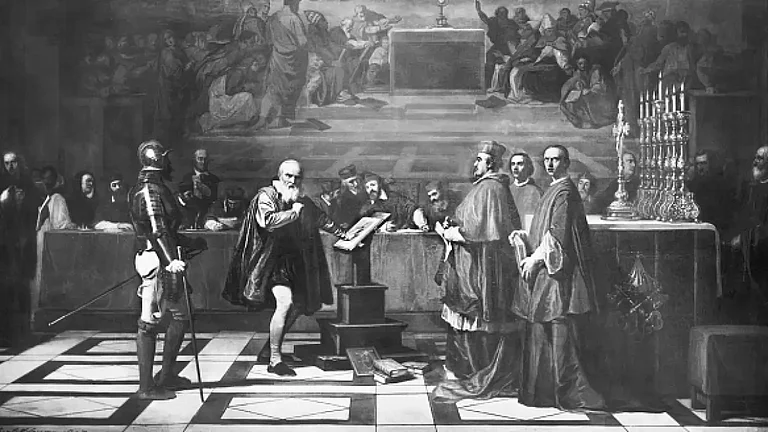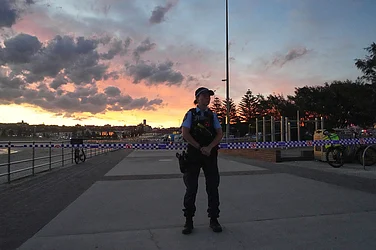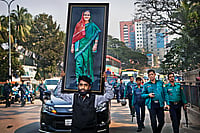Ukraine is in the eye of the storm, as talk of a possible Russian invasion continues to grab international headlines. The US and Russia are playing mind games over Ukraine, each side trying to call the other’s bluff. Whether this is all posturing or could lead to an actual war remains to be seen.
Ukraine and Russia have had a chequered history, but share a common heritage going back to ten centuries. Both Russia and Ukraine trace their roots to Kyivan Rus, which was the centre of the first Slavic state. Kyivan Rus is modern Kyiv, the capital of Ukraine.
In 1793, western Ukraine was conquered by Russia. During the Communist revolution of 1917, Ukraine too plunged into civil war. In 1922, Russia absorbed the entire country and it remained a part of the Communist system. In 1954, Soviet leader Nikita Khrushchev, gifted Crimea, which was part of Russia, to Ukraine. Little did he realise how this decision would impact Russia’s future ties with that country. Ukraine remained part of the Soviet Union till it gained independence in 1991, following the break-up of the Communist state.
The newly independent Ukraine kept a fine balance between Russia, the US and Europe. All that changed when pro-Russian President Viktor Yanukovych refused to sign an agreement with the EU in November 2013, which Ukrainians living in the west of the country wanted, as they felt more at home with Europe than with Russia.
Public opinion was divided between those living in the east of the country, who were loyal to Moscow and others who wanted to have closer ties with Europe and the west. The result was civil strife and the ultimate ouster of President Yanukovych in the February 2014 revolution.
Following Yanukovych’s removal from power, people living in the eastern part of Ukraine held several counter demonstrations against his ouster. A large number of Russians had through the decades migrated and settled in the east and their loyalty remained with the home country. Eastern part of Ukraine which is closer to the Russian border and largely pro Russia, while the west which adjoins Europe is for greater integration with the west.
Yanukovych’s supporters are mainly from the eastern part of Ukraine. Crimea, again in the eastern flank of Ukraine, has a large Russian speaking population and has backed Yanukovych’s anti-EU stand. As the crisis developed, Russia stepped in and took over Crimea in 2014. Since then, a Russian takeover of Ukraine has been like a Damocles sword hanging over Ukraine and relations with Moscow had soured.
Moreover Russia-backed separatists in the east are at war with the federal government of Ukraine since the 2014 revolution. Donetsk and Luhansk People’s Republics have declared themselves independent of Kyiv. These two territories have got financial and military backing from Russia. But Moscow has stopped short of recognising them as independent countries.
The US and Europe have also ensured that the rest of Ukraine remains anti-Russia and closely allied to the West. In Ukraine, the clamour for admission to the North Atlantic Treaty Organisation (NATO) rose organically from the fear of being taken over by Moscow. Ukraine is now desperate to link its fortunes to NATO and the EU.
Moscow is not against Ukraine’s close ties with the EU, but Russia believes that NATO expansion into Ukraine, which is literally its backward, is a threat to its security. Since the breakup of the Soviet Union, NATO, a transatlantic military alliance, has steadily inched closer and closer to Russia.
Earlier the eastern bloc nations served as a protective layer, or a buffer zone between Russia and NATO. Since 1991, NATO has been expanding. In 1999, Poland, Hungary and the Czech Republic became NATO members. In 2004, Bulgaria, Estonia, Latvia, Lithuania, Romania, Slovakia and Slovenia joined the military alliance. In 2009 it was Albania and Croatia, and finally Montenegro in 2017 and North Macedonia in 2020. So, NATO has tied up most countries from the former Soviet Union and is now aiming to get Ukraine into the western military fold.
American and British military advisers are in Ukraine. US defence systems are in place in Poland and Romania. NATO troops hold exercises in Latvia, Lithuania and Estonia all once a part of the Soviet Union. Moscow see’s these as a threat to its security and want an assurance that NATO would not take in Ukraine. Nobody is willing to give Moscow that assurance, since Ukraine is desperate to join the military alliance.
Finally, the Ukraine crisis boils down to Russia’s legitimate security concerns over expansion of NATO to its doorstep. It also wants NATO to roll back from the former eastern bloc nations, which is a maximalist demand. If the US and its allies are willing to give such a commitment the crisis will be diffused. But NATO is in no mood to give in to Vladimir Putin. ends



























